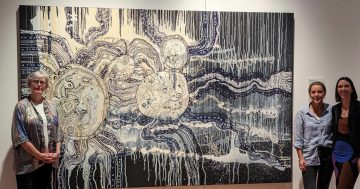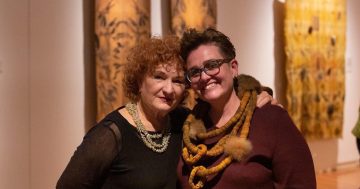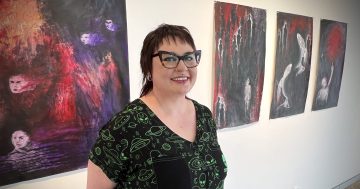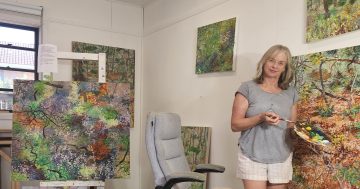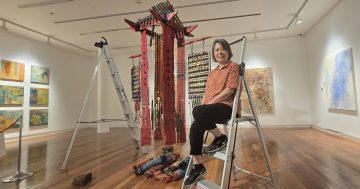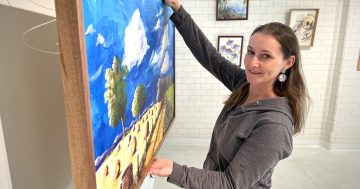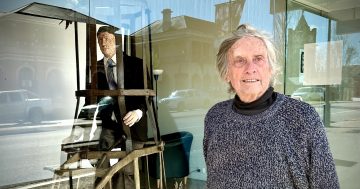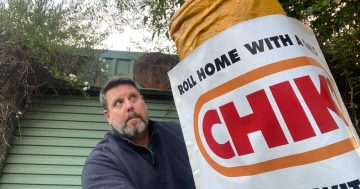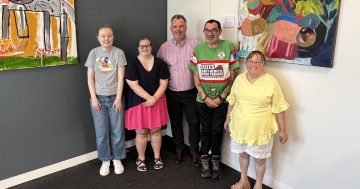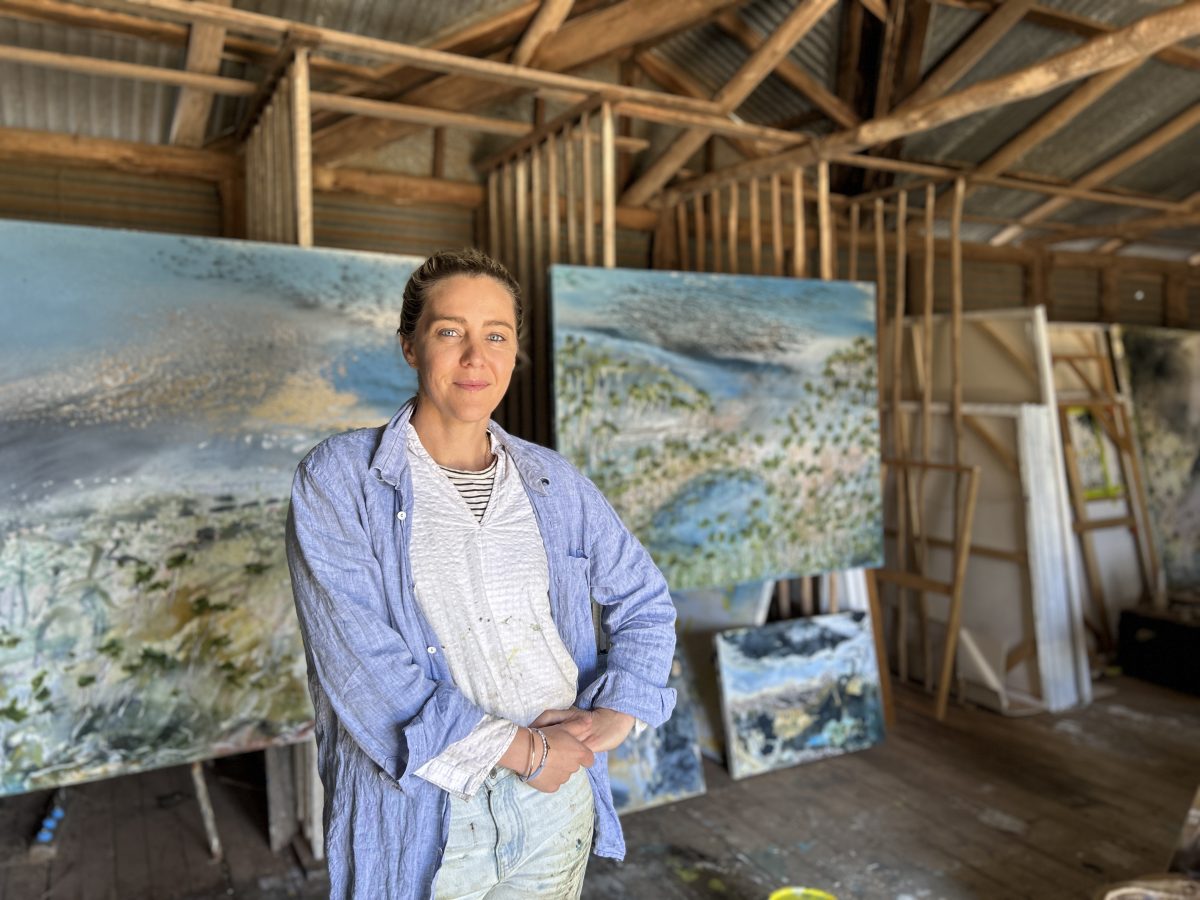
Artist Julia Roche is preparing for multiple exhibitions in 2024, including one at the Wagga Wagga Art Gallery in April. Photos: Vanessa Hayden.
Julia Roche challenges her desire to control by allowing nature to play a significant role in her work.
In fact, it’s the interplay between the elements that surround her and the canvas in her sight that is vital to the end result.
Her style is plein air, a French term that literally translates to the act of painting outdoors or “in the open air”.
While this kind of art has been a popular practice for centuries, it requires specific skills and techniques that contrast with studio painting.
There’s nothing like complicating the already delicate process of painting by letting the changing light, heat, wind and in many cases for Julia – dust – interfere with the development of the picture.
“Sometimes it’s about knowing when to step back and let nature play its part in the creation,” Julia says.
“Harnessing the elements, like wind, to manipulate the paint can create both stunning and intriguing accidents.”
Julia works from the family property, located between Wagga Wagga and Mangoplah. Her studio is a repurposed woolshed and when she’s not painting, she’s wrangling three children between the ages of five and eight and helping manage the sheep and cattle farm with husband Mick.
“For my upcoming solo exhibition, my concept is to paint plein air from the same viewpoint on the farm, but at different times of the day. I’m interested to see what emerges visually and emotionally,” she said.
“Because I paint in the elements, the direction of my work can change significantly, depending on the weather.
“I select my materials – oil paints, oil sticks, shellac, charcoal and other mixed media – based on the atmospheric mood I’m trying to evoke. I’ll use a combination of brushes, found objects and my hands. It can be quite a primal and emotive experience.”
Through her work, Julia hopes to elicit conversations about how we interact with the environment around us. She hopes audiences will create a closer connection between seeing and feeling.
It is hard to narrate her work. Or is it? Her paintings are evocative, there is no doubt about that. They are ethereal yet you somehow know it is the Australian landscape in your lens.
They are moody and immersive. Am I looking at it from a bird’s-eye perspective? Is there more than one dimension here? Is this painting telling a story?
Part of the beauty of her work is that there is usually no pre-ordained idea or concept. What eventuates has occurred organically – from internal and external influences.
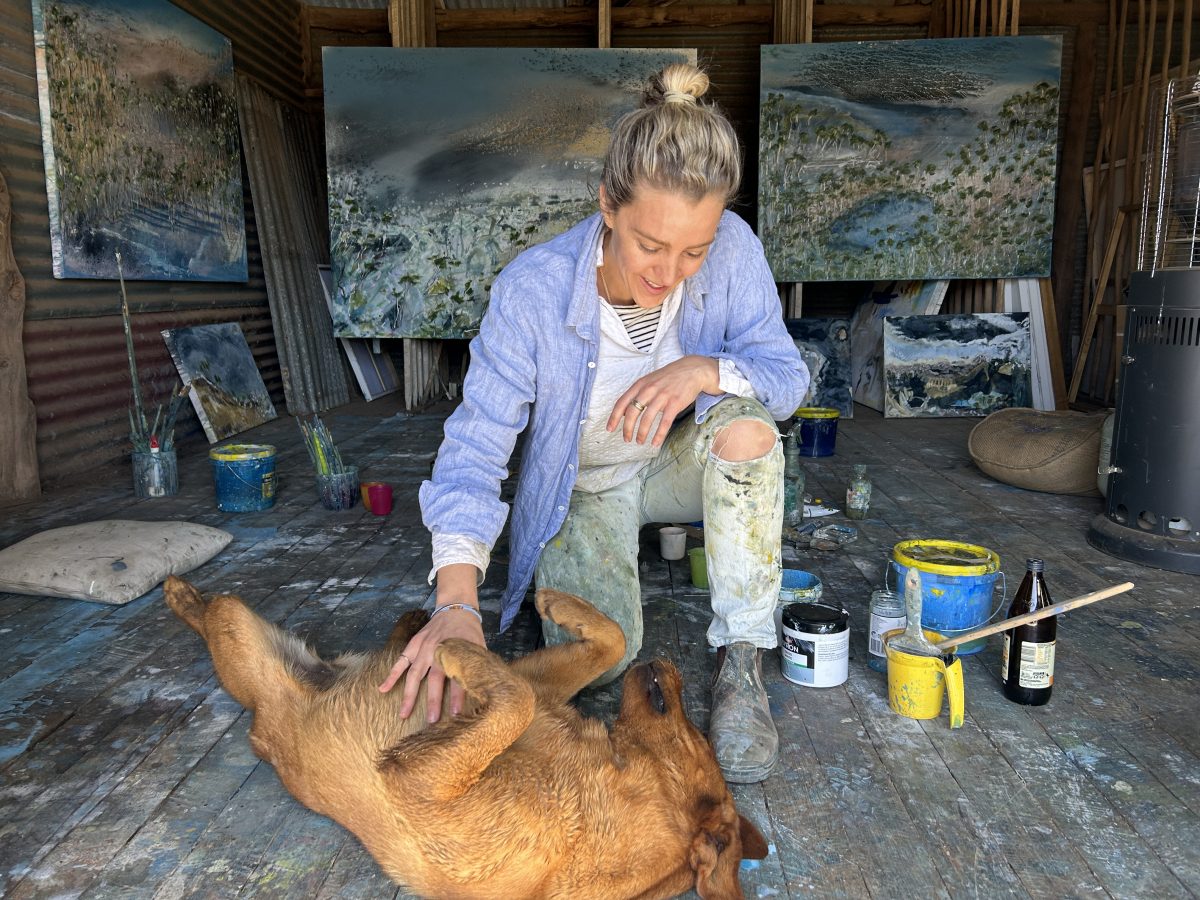
Julia’s studio is a repurposed woolshed that is open to external influences such as an unexpected visit by her red fox labrador Lottie.
Julia is in the midst of a busy period in her life. She’s working on a series for an upcoming exhibition at the Wagga Wagga Art Gallery, which opens in April, followed by exhibitions in Melbourne and Sydney. That translates to producing some 20 to 30 large-scale works before February 2024.
Just to make that challenge even more complex, some of the works in this series will be created during the night.
“The Wagga exhibition will open alongside two travelling exhibitions in April,” Julia said. ”I’ve been investigating the idea of working during the night – focusing on my other senses – and I’m looking forward to continuing on with this.
“I’m going to do half the series in the daytime, of the night, and the other half of the series in the night, of the night.”
She admits it’s highly experimental.
“I’ve got minimal control, I’m outside and I can’t see a lot. The process will be very challenging – do I walk out really prepared with my colour pre-mixed or do I do my base colours inside, the foundation, and then just *mark-make what I see, feel, hear and smell whilst outside?
“Depending on the time of the year, I will see what the moonlight provides because sometimes we have gorgeous clear nights and my workstation is illuminated and other times they are not.
“I’m not quite sure yet if I’m going to manipulate how much I’m going to see or if I’m just going to let it be what it is.”
After the Wagga exhibition, the series of works will be on show at Otomys in Melbourne from 13 to 29 June and then the Wagga series will tour to Defiance Gallery in Sydney and be on display from 27 July for two weeks.
Julia has painted for as long as she can remember.
“I spent a huge amount of my senior years in the art rooms mark-making, life drawing and painting.
“I was focused on the human form back then … particularly the female figure. I was rather obsessed with the likes of Auguste Rodin sculptures and his fleeting nude drawings.”
After travelling through Africa in her gap year, she went on to study arts at Sydney College of the Arts and later a Master of Teaching at UWS.
She says her style is forever evolving.
“I guess some solid consistency in subject matter has formed since moving back to my family farm in 2018. I can’t imagine painting anywhere else but in the bush and in the elements.”
You can follow Julia via her Instagram page, or find out more on her website.
*Mark-making is a term that describes the way artists produce different lines, dots marks, patterns and textures. Mark-making can be done with any art material on any surface and is the ”gestural” language of the artist.







